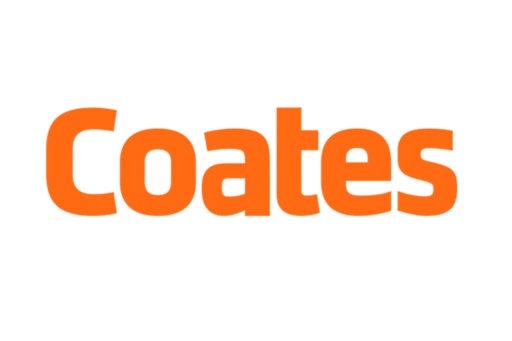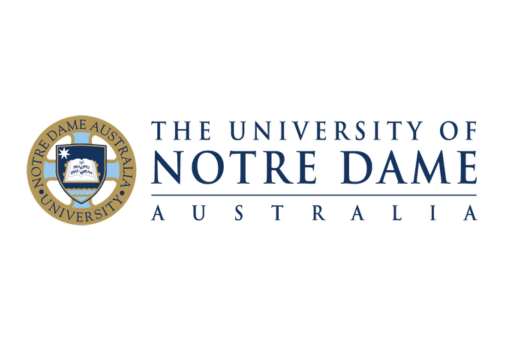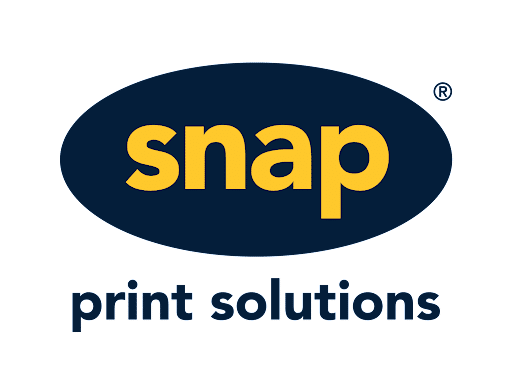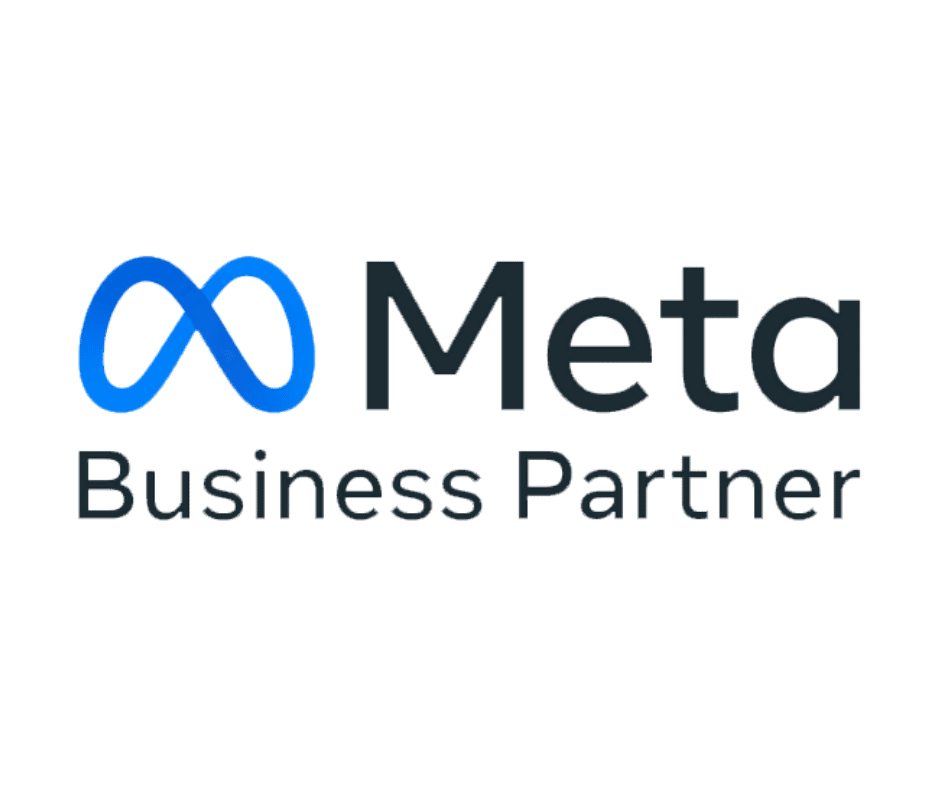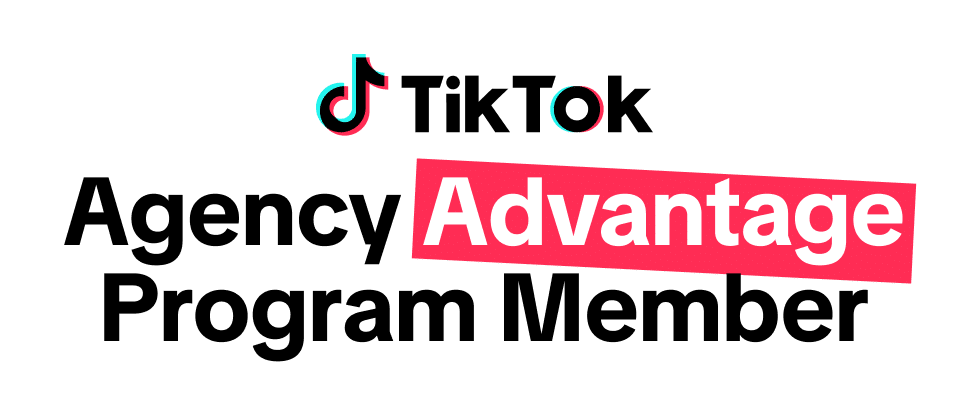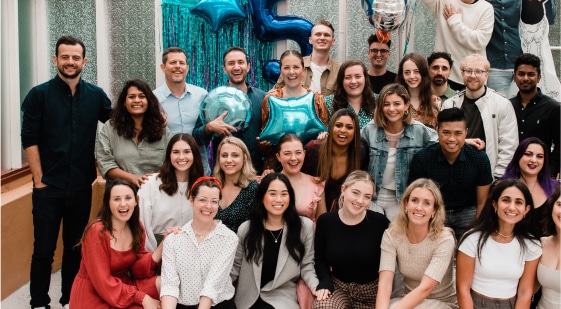The Power of Account-Based Marketing
Episode Description:
Key Takeaways:
- Paola’s journey - from London to Sydney and her global marketing experience
- What is ABM and how it differs from traditional B2B marketing and demand generation
- Common ABM challenges and misconceptions:
- Lack of ABM maturity in APAC and ANZ
- Getting buy-in between marketing, sales and the leadership
- Budget concerns due to the misconception that ABM is expensive
- The challenge of selecting the right accounts (and the right number of accounts)
- Creative detachment from the goal of the campaigns
- Case studies of stand-out ABM campaigns:
- T-Mobile Batman comic book campaign - Using personalisation to secure a meeting with a CEO
- Auto Telefonica’s remote control truck - Direct mail tailored to an executive’s interests
- Adobe’s executive roundtable breakfast - Engaging high-level decision makers without a traditional sales pitch
- Technology and AI in ABM: opportunities and risks
- Practical advice for marketers considering ABM
Featuring:
About the Guest:
Paola Piccinno is a fractional marketing strategist and ABM expert with 20 years of global experience across B2B and B2C. She specialises in digital strategy, growth marketing and transformation, bridging sales and marketing to drive impact. Fluent in four languages, she excels in cross-cultural strategy and connecting the right people to make things happen. As a fractional CMO, mentor and speaker, she helps businesses scale through strategic ABM, pursuit marketing and digital programs across APAC and North America.
You can follow Paola on LinkedIn. You can also visit her website to know more.
Transcript
James Lawrence: Welcome back to the Smarter Marketer podcast. I'm here today with Paola Pacino. Paola, welcome to the pod.
Paola Piccinno: Thank you, James, for having me. Hi.
James Lawrence: It's an absolute pleasure. So by way of introduction, Paula is a highly experienced Australian based marketer throughout her career.
She has worked in Europe as well as Australia at large brands like Microsoft and Google, as well as locally at brands like NRMA and News. , she's worked. Agency and client side, as well as lectured on marketing strategy and digital marketing at RMIT, um, over her career. She's narrowed her focus and now does a huge amount of work in account based marketing, ABM, running campaigns, both locally into APAC, but also North America and Europe.
So Paola, when I thought ABM, I thought of yourself. , , before the, before we started recording, you were mentioning you kind of living the dream up on the Sunshine Coast, you know, with the, the water outlook, like, how did you end up kind of that, that journey from Europe to Australia?
Paola Piccinno: Thank you. Um, first of all, the dream means a lot of different things to different people. , for me, , I like it, we like it here, but for me, the dream is getting stuck in a, you know, concrete jungle. So, you know, my years in London, in Milan, in Buenos Aires, they were the dream.
Uh, so was Sydney and Melbourne. So just to, to be outside of our comfort zone, my partner and I, after we left Melbourne almost four years ago, we thought, let's get out totally outside of our comfort zone. Once again, we are already in a country, you know, we're not from here. I'm Italian, he's Dutch. And then we picked, yeah, the cost because we wanted to live, um, to live the Australian dream.
We like, we like it.
James Lawrence: , And what were the roles that kind of led you to take to kind of, uh, I guess, harness that focus into a B.
M.
Paola Piccinno: First of all, although the company's marketing is, as we know, it's been around for over 20 years, I want to say 23 maybe by now. But in some regions such as the U. K. In the U. S. A. B. M. It's always been more. Well, the maturity is a lot higher around the company's marketing. So I really believe that already in the first years of my I was a channel marketing manager.
Uh, responsible for B2B and distribution and Microsoft in Milan. Um, I was doing, we were all doing ABM. We just didn't know that it was a bit, but everything, every time I was going out with two clients, I was always aligned to the sales team or the account manager responsible for that. Our objectives, both at Microsoft and at Kingston technology in London, when again, I was in channel marketing, they all had to be aligned.
So it was, we were working as one team. So I believe it's always been ingrained in what I did. That's the way my marketing brain has been shaped from these very early experiences. And I'm so lucky. I really feel fortunate that I could start my career with those names on my CV and this exposure. So when then later, more five years ago, I joined the marketing practice, uh, which is this Oxford, um, headquartered, but global B2B marketing agency.
Um, At least at the time, 99 percent of the work that they were doing with tech clients was ABM. I felt like I already knew it and I, it just made a lot, made a lot of sense, but I, I really specialized massively in ABM in the past five to six years and it's almost becoming all I do.
James Lawrence: That's awesome, isn't it? And I think we've had, um, a few podcast episodes positioned a career advice for younger marketers. And I think that, um, You can get such a great grounding working in some of those bigger organizations and working on kind of more formal planning and strategy.
And then also just moving around a little bit, not too much, but enough to kind of start to really find the parts of marketing that resonate with you. Because I think we're all different, right? Some of us more into B2C campaigns and some selling. Moving to a point where you go, actually, I really, I really like this, I think for, um, just for listeners to the pod who might not be so familiar with account based marketing, ABM, just if we could talk a little bit about what it is,
Paola Piccinno: so, ABM, first of all, we are playing within the B2B space here, just going back to the basics, it's a B2B play, um, it is a highly specialized and tailored and personalized, um, strategy. It's a whole strategic program. That's really key. It's not just another campaign that you plug and play and you set and forget.
So it's a whole strategy. Um, then involves a few elements such as alignment across sales and marketing at the very least, but also customer success. If there is such a team within the organization, um, And what it does it allows an organization to target either an existing client which in abm language is called account So if you hear me throughout the podcast mentioning accounts, those are your prospects or clients So it allows the brand to target a really Valuable account either for them to grow their accounts that exist in account or to get a new one on board it is normally used for By organizations in tech because they typically in sas Because they typically have really long sales cycles.
We're talking two years after two years of sales cycles So they really have the need to build a long lasting relationship. They don't need an organization to just click on that Banner and take an action. It really, it's a , long nurturing journey that needs to involve sales and marketing.
, for me, ABM is really a , change management piece. Um, and I feel the more I work with clients, no matter the industry or the size of the organization, I feel like I'm taking My clients, the CMO and then the sales, um, representatives on a journey and learning and they learn together how to combine their objectives, work together across the same KPIs.
Um, it takes time. It's everything but easy if it was easy more brands will do it and trust me they're not they're not another element on abm is things are evolving.
I'm sure a lot of abms on the call on the listening on the other side might Not agree with this, but historically uh, the three types of abm that I think the lines are a little bit blurred at the moment, um, but the three types of ABM are one to one ABM, one to few, and one to many. So the one to one means that you as a brand only pick one account, it could be an existing or a new one, and you focus all your efforts into that.
So you build the whole intent data, research insights, value proposition strategy, and then the campaign only to target one account. . It's really heavy in investment in terms of resources time and budget comes without saying And one to few is when you pick then a cluster of accounts and for me the sweet spot is between three and seven Ideally, and they will have to have enough elements in common For for a campaign to make sense For the whole cluster.
And then the one too many. It's 100 plus. I would argue that demand generation is not a game anymore. I don't normally play there. That's not you lose the personalization. But those are historically if you want to go back into where IBM was started. Those are the three types of IBM
James Lawrence: , and I think that's right.
It does. It does feel that one to one makes a lot of sense. I think IBM one to a few makes sense. You know, you're picking some target accounts and putting a lot of effort and time. To craft messaging and stories that will resonate, but the idea once you start getting into one too many, it feels a bit like marketing, right?
Paola Piccinno: Yeah,
James Lawrence: exactly
Paola Piccinno: By the way, I want to say there's nothing wrong with that. There is a time and place For that and not every brand and every campaign should become an abm It's yeah, there is a thing called abm readiness that I would encourage every team every brand to go through this process To understand, are we ready for it?
Because there are a lot of companies that really want to do it. They've heard this, they've heard your podcast and they think it's cool. I want to do it, but it can really be a disaster in the medium to long term. If at the very beginning, they didn't have all the tools and, skill set in place to start it.
So if they're not ready for ABM, well, then demand generation could be the thing to start from. So I'm not against demand generation altogether. It's just that I wouldn't call it ABM.
James Lawrence: Yeah, and when you're talking about a B to B, you are talking long sales cycles. You're talking, , complex buyer environments where you've got multiple stakeholders that need to be influenced.
You're talking about decisions that might only be being made every two years, four years, five years within a company. So it does feel that to do anything effectively in the space, you need to come into it with your eyes wide open, right? As to expectations around it. What kind of result, what leading indicators we're going to see and how long will it take for us to actually see some of those more kind of tangible things happening , think it'd be good to just talk about, like, what are those challenges that you see market is having, um, either getting a program off the ground, or if they are running a program.
kind of what's not working.
Paola Piccinno: I think the challenges might depend on the region because I don't only work with Australia. Um, and as I mentioned earlier, there is a lot of difference in the level of maturity around the knowledge, the awareness of ABM, the challenges are having. APAC. They're not exactly the same that I have, I would have in the US.
So if we stick to our region, APAC, and Australia, and ANZ specifically, , it's the maturity. So the first piece I always have to go through, and I love that, it's the education. , I don't take for granted that everybody who's approached me wanting to run an ABM campaign, they know exactly what's needed.
What it is and how to run it. So it either comes from them that they asked me, the CMO comes to me and says, I really want to do it, but I need my marketing and sales team to be on board with it. And I need them to know what it is. So the first piece is always for me to, I call them, I call it an ABM foundation session, , with different modules.
, so yeah, definitely the education piece. If they don't come to me asking me that I make sure that we take that box first.
James Lawrence: So
Paola Piccinno: the education piece is the first challenge, I guess, is to, make sure that all the people that need to be on board, the internal decision makers, the budget owners within the organization, they.
They have understood what it can do for the organization. , and there are different ways to, to go over this.
Foundation sessions is one, um, running a pilot, so starting small. I, or I can not. Say these enough to start small. I'm not, you know, clients will come to me saying I have 60 60 accounts. This is true story that I want to target between us and and said, Let's just start with all of them and I have to take them on a journey.
And it takes time to step back a bit and start with one. So the, uh, that's a, that's the biggest one. Even if it's only one challenge, that might take weeks
James Lawrence: to
Paola Piccinno: get over. Another challenge is, , silos within organizations. , nothing new. Um, you see those silos more in the big organizations at enterprise level.
Less obviously when I work with startups and scale ups because the teams are leaner But yeah, marketing and sales just not talking to each other as simple as that Also, I find it interesting how sometimes well most of the times they come outside the organization to an agency or consultants For them to learn how to listen to each other it works.
Also, another challenge is because there's not a lot of awareness around ABM, , in some regions, people think, oh, it's expensive. It's just, you're just, you as in another agency, just marketing is going to come to me and ask me to spend a lot of money. , ABM does have this reputation that it needs to be a really expensive because historically they had the Adobe, the Microsoft, the IBM of these words running those campaigns.
putting a lot of money into it. And that's fine for them. But, , I find like I have to convince and again, take my clients on a journey, showing them that it doesn't have to be expensive. You can still be very creative, very, you can still personalize highly the content. You can leverage existing content.
You can absolutely leverage the mark tech. So you don't have to throw away out of the window, all the assets you have. I guess it's all parts of the education. , another challenge is the KPIs, uh, as much as I stress that I, you know, they need to be set up at the beginning before we even start the campaign and reviewed periodically.
, sometimes things can fall there. Marketing wants some KPIs. Sales is measured in and you know by other KPI. So finding that alignment on that um i'll just Share the last one. It's when the creative team when we are in the execution Phase implementation phase doesn't talk to the strategy so it doesn't matter how beautiful and Well thought the strategy, the value proposition that you've put together is based on great data and great insights.
If that is not brief properly,, to the creative team. So my big advice then it's, uh, I really believe in this even outside of ABM is to get the creative team involved as early as possible in the journey. That doesn't mean that they need to start working. When you're still doing the insights and the research, but at least they know it's coming.
They can start getting their head around, you know, when they go to for a walk where they're in the shower and just keeping that keeping the strategy involved throughout the creative process. As a strategist, I always like to get involved even when my piece is over, you know, when my phase is done, I, it's really , good practice for a strategist to check in and see if there is alignment between what the creative team is putting together and the original problem that we are trying to solve.
James Lawrence: Yeah, that's so crucial in terms of because it is that temptation, right? I think it's so, I guess, like ABM. Grew out of technological changes, right? Allowing us to target, , in a way that we previously couldn't, , running digital campaigns. There is always that balance of segmentation, right?
It's that ability , to create campaign structures where your audiences get kind of cut up in a myriad of different ways. But once you go too broad, Everything gets diluted and you literally can't execute correctly. , so I think it makes a lot of sense that, you know, a client would come to you saying, here's the 100 accounts we're looking to target and it's like, well, we're not going to get the traction if we do it.
, is there the risk you put all your eggs in one basket by starting with just one account versus say, starting with. Three or six. And I know you mentioned kind of three to seven. Is that sweet spot you'd like to get clients getting to at some point? Like, how do you make that decision on just getting going with one, but then it doesn't work.
And then the whole thing gets kind of given up on,
Paola Piccinno: , , if it's one to one or one to few, it depends on always the why, why are we doing this? And what are we trying to get out of it? It's not just the budget. Driven decision. Um, I tend to involve the sales all the important decision makers within the organizations if it's a Small organization the founder is involved and then sales and marketing um, and we really come to a decision conclusion together based on data is not based on the flavor of the day, but Once we have all the elements on the table and we know what they're trying to achieve what the long term next two to five years is then I can advise them on the best approach.
They have the ultimate call, but normally they follow my advice. , most of the times, and this is not just Paola Piccino, but in general, the best practice is to start the pilots with the one to few. Because then it's a, it's easier to demonstrate success. It's easier to scale. After a few months of running the pilots, you might have one or two out of the, let's say, seven accounts already showing some, , higher intent.
Some signs that they need more, more dedicated program. So the one to few can scale into , one to one. I have another example with a client, Schneider Electric, in the past when we did a pilot for one industry only in ANZ, , and it was a one to few. And then we replicated, we, it went extremely well.
We had built really strong frameworks throughout this program. So we replicated the same one to few. To other industries, obviously with some differences, but the framework was there. So , there's not one correct answer that fits every organization. It really depends on what your organization needs.
James Lawrence: With the Australian landscape, like at one level, it makes sense for less activity, right? We have less. Like you go to conferences in America and the kind of the size of the mid market and the size of companies and obviously the economy is a lot bigger, , so we have less target accounts still should make sense that , if you're an in house marketer in Australia and in the kind of this B2B space, you've still got accounts you're trying to target, right?
So, like, why is there that lack of awareness? Why is there the lack of traction? Like, why are we falling behind?
Paola Piccinno: Oh, no, I never said those are not my words. I never said you guys are falling behind.
James Lawrence: I mean, yeah, that's the snippet we're going to use for the pod. But I guess, why isn't it as big a deal here?
Is that kind of the feeling?
Paola Piccinno: , marketing budgets are smaller in APAC. And then even smaller, especially I was spoiled coming from the UK. That was the headquarter of the whole of EMEA, Europe, Middle East and Africa. Budgets must be bigger there. So you can play, you can experiment with them more.
You can make mistakes fall. Um, don't, you don't have that space here. , it's just that in general, the maturity of B2B marketing strategy is not just ABM. , it takes a few years longer than, um, than the States for all the reasons you said. The market moves a lot faster over there.
There's nothing that cannot be fixed. And to be honest, , for me, this is not a negative thing at all. If anything, it's an opportunity. Yeah. I can see at least two opportunities from a supplier point of view, like myself or, you know, other agencies to make the difference and to educate them to be those people that are really making the difference and moving the needle.
I love to see that what I'm doing is having. An immediate or, , just visible results. Um, it's exciting. So I feel like possibly I could make, I make more of a difference in a country like Australia than if I was one of many ABMs in the US. So I love to see the joy in the expression of my, , clients at the end of a workshop.
, and that's. That's priceless. Another opportunity is to, know that if, if there's low maturity in Australia, there is a high chance that your competitors as a brand, they're not doing IBM. So jump on that and be the first one, , to get that accounts and speak to that account in such a personalized way.
You have a great opportunity , because this is not the U S and not many brands are doing it. So you want to be that brand to do that first.
James Lawrence: I think it's
Paola Piccinno: brilliant.
James Lawrence: I love it. I love it. I love the passion. , we're talking B2B, we're talking complex, long biocycles. Um, you've mentioned SAS as being a place where ABM traditionally has kind of
Paola Piccinno: worked
James Lawrence: well.
Are there other areas within B2B that you've seen? Um, types of businesses that generally do well. I guess I'm trying to, you know, if you've got marketers listening and you're not in SAS, but you're kind of in B2B long bio cycle ,
Paola Piccinno: so, um, , even if I go through my, the industries, my clients, uh, work within, they are, most of them are tech, but then I have, , clients in the health space, uh, construction, engineering, mining, you know, I guess the message is don't limit yourself. If you if the answer to those questions, uh, yes, then it's the right place for you. You could start thinking about account based marketing provided the organization is ready for it, but it really doesn't matter about the industry , so the questions would be, do you need to, , build long lasting relationships?
Do you need to convince a multiple layered metrics of people and stakeholders, not just the decision makers, but you also need to get the message through the influencers and the partners and the suppliers , around the account. , is the company working with really long sales cycles? , is the journey of the B2B buyer complex and not linear. If the answers to those questions are yes, that's a really good time for you to consider account based marketing. So I couldn't give you possibly a list of definite industries.
James Lawrence: , I think that explains it, right?
We're talking classic B2B marketing in terms of that complexity. Length of sales cycle and I guess presumably a business that has a pretty clear idea of. Who are these target accounts? Who are these companies that we would be perfect to work with, right?
Paola Piccinno: , that's the ideal world, but that's not always the case.
And I feel like once again, , most of the times in clients don't know, they think they do, but , I invite any marketing professional that is embarking into ABM to be the that annoying person asking, being curious, ask the question, challenge them. , they're also paying you for that, by the way, they're coming to you not to just say yes to the list that they're giving you, but also to question it and change it perhaps.
But you don't change them before taking them on a journey. So a lot of the times clients come to me saying, I know, I know this is, those are the ones I definitely know. And then I take them through a little bit of a kick off call when it's called the account selection process. And as we go through this metrics approach with the sales team, very important, the other people that not, they have the highest knowledge about the accounts, uh, by the end of the call, trust me, the least has changed.
But I haven't told them to change it. , we've answered those questions together and they've realized, Oh, so there wasn't the right account to target for those reasons. We used, some criterias to go through this, but no, don't take for granted that the client knows exactly the accounts or the ones that they are proposing are the right ones.
It might be, but validate them together with them before starting.
James Lawrence: And what sort of questions or what are the hallmarks of a, an account worth? Generally, generally a better account to kind of go to market on versus one that might superficially have seen to be good, but you get you start to kind of question whether it is one worth,
Paola Piccinno: , normally, I built this list of questions based on the different industry, you know, size of the market client itself.
So, you know, don't think you need to copy and paste those ones if they really vary, but they're around. Those questions. What's the value of the account? You know, what's the revenue we potentially could make? Is there an upcoming tender or RFP, in the next 12 months that we need to start working on? And, , Massaging the client about now or the prospect about now and not just send a proposal in 12 months time.
Um, , are we running the risk of losing the relationship with that specific stakeholder for whatever reason, historical reasons, or , is that a new player in the market? Maybe we are facing a new competitor and we know it's coming or, um, are we entering a new, , Market all together. So we need to expand, you know, we, we need to leverage that client more because it helps us get the foot in the door into another region.
. Do we have an account manager aligned , to that client, to that account? Do you know , how many fall with this question? Like they want to run an ABM, but when I ask them, Oh, do you have a team or an account? Person and the same person dedicated to the car.
No, no, we don't have anybody.. Uh, explain that even when you, let's say you launched it, you build the program and you launch it.
Who's going to follow up? Who's going to keep track of the KPIs is going to do the nurturing. So if the answer is no, we don't have any account sales account person dedicated to that account. It's, it's a no. And sometimes my clients went and hired someone or moved. People internally to have someone dedicated to the account and then we run the program and it went so well , there's so many questions I obviously don't take them through too many I leave them to 10 to 15 But yeah, it could be a client's that we we've lost last year and then we want to win again It just depends.
Yes.
James Lawrence: Well, maybe it makes sense what are ABM campaigns? Are they all digital? Is there anything offline? Like how did it, like, is it, is it LinkedIn? Is it emails? I'd like to hear how it generally kind of plays out in practice.
Paola Piccinno: In my years of experience, um, I build a lot of go to market plan, which is the natural next step after you build the whole strategic framework, right?
And then you go into tactics. So you see the channels, what messaging for each channel, what's the stream there? I haven't seen two GTM plans that look the same. They all look absolutely different every time I need to literally reinvent the wheel. You know, it's not a copy and paste that you take from one, one to one or one to few ABM program to the retail industry to another brand.
And it's the same retail industry. There's so many variables. So that's just to start with that. No, it's not only digital. Digital plays a role, of course. Um, but I'll give you examples of. tactics that could be part of a go to market plan. , the lending pages. They could be, one to one , highly personalized lending pages that speak down to the stakeholder level.
That's the beauty of one to one. You can go down to the CEO and then you can have a different messaging if the CFO is navigating the site. , LinkedIn plays a role providing obviously that your target audience is there already. I'm around a workshop last week and The client was really eager to have linkedin like organic and date and In mail and use sales navigator.
To target these accounts the Then based on the insights and some research that I've done, we found out that none of the stakeholders, some of them were not even on LinkedIn, and the ones who were, they never, it's really rare, but they never posted anything ever.
It's just not a platform they're active on. So we had to step back and make a decision , maybe there is a role that LinkedIn can play. But it's not going to be the biggest thing we put on the go to market. So we have to think about where is our audience? What do they consume?
What do they like to consume? How they like to consume that content? And based on those information, then you serve them the content by different channels. It could be an event, and , in person engagements are , really common. Um, Adobe, , when it was my clients at the marketing practice in APAC, they were really big on what they call, , executive engagements.
And they could be in a form of a executive breakfast where for one of their accounts, it was the We invited the whole of the C suites at a round table breakfast. No presentations, no marketing materials, nobody even mentioned account based marketing. And, you know, you need to tailor the messaging and the way you speak to them to the audience.
So it was A very, , relaxed breakfast where, of course, the topics around why Adobe could help the Sydney Opera House came out, but, , it doesn't have to be, like, there's not a white paper next to the scrambled eggs for this CEO, you know, you don't want that. There is a time and place for a white paper or a printed document, , but, yeah, again, it depends.
Uh, something that I'm really I really think works really well, where it fits well within the strategy is DM, so direct mails. There is this example, , it's really easy to find online, it's from the UK, ABM. Auto Telefonica, , wanted to target this specific account and they had the name of the CEO as you do when you're at the one-to-one level, you know, the stakeholders you wanna speak to are, um, and from the researchers on these accounts.
, they found out that the CEO has a passion for trucks, like real trucks, the one you see on the road. So. The creative team that was involved very much at the beginning of the process, they chose not to lose the piece of insights. And as the strategy team was building the strategy regardless, you know, doing all the due diligence around value proposition, messaging, comms plan, etc.
The creative team came up with the idea of using, all the content that the strategy team had created and put it into a mini truck, like a mini version of a truck with a remote control that was delivered to the office on the only one. They only produced one. Um, it was delivered to the office of the CEO, , all branded auto.
It sounds gimmicky, but obviously they named the strategy. I want to, I want to be careful of this. It's creativity. You can have fun with that and that's what it is for to get the message across. But if the strategy is not there in the first place, you can send them a star and it's just not gonna, , get to the objective you want.
Obviously they want the account. There are so many results in terms of numbers. On the case study there. It's just one example. .
James Lawrence: I think when, you know, marketing, when people zig, you kind of want to zag and it does feel that in recent years, direct mail has had a resurgence, right?
Because I think it probably was an oversaturated medium, and it's kind of, but a budget moved away from it, and now it probably does have that cut through that it once didn't, even broader than ABM, right? In terms of the effectiveness of direct mail across the board.
Paola Piccinno: Yes.
James Lawrence: What other, like, any other awesome examples , of account based marketing, creative approaches?
Paola Piccinno: Yes. , I didn't work on this, by the way. They're publicly available online. It's, again, from a few years ago. Um, this tech provider, GumGum, wanted to target T Mobile. That must have been in the UK again.
, wants to target T Mobile one to one. So we're talking again, one to one ABM. , and they wanted to demonstrate to them that if they could partner together, they will just achieve amazing things, by the end of the year. Um, they had done research about the, , The C suite stakeholder that they were trying to target.
And this person was very active on Twitter at the time. And he would share his love for Batman comics. , again, they jumped on that. , the creative team could have also decided to ignore that piece of insight. They didn't, and they, created a comic. Um, With the face. I know it sounds creepy.
I think it's genius. Some people told me this is creepy I just think it's brilliant. It works. They obviously i'll tell you i'll jump to the results They won the account, but that's how they got there was , they designed the comic, uh with the face of The accounts of the stakeholder as Batman, but the content, of the actual comic wasn't about Batman at all.
It was about look at how we can pick up something along those lines. We can become superheroes together if we combine our technologies and our efforts. It was delivered to him, to his office, as well as to 100. T Mobile stores around the country, , within the space of a few hours, this C suite stakeholder posted, , on Twitter about how amazing this, this, you know, receiving this comic was.
He reached out, they had a meeting, and before then, they could never reach T Mobile. They just, the sales team couldn't get a meeting in with anybody, let alone with the CEO. Twitter post, uh, meeting in won the account.
James Lawrence: I'm
Paola Piccinno: making it sound very easy, guys, it's not.
James Lawrence: No, but I think those examples, I think, bring to light the difference between a one to one or a one to a few approach versus that, you know, one to a hundred, where you just, can't get that kind of cut.
And I think what you said is so impactful for ABM, but more broadly, it's strategy led. It's insight led.
Paola Piccinno: Absolutely.
James Lawrence: Creative needs to be those things. It's there's no point having, you know, it's a beautiful creative that wasn't a comic book or something else. It wouldn't have resonated. Um, it's it's really, really cool.
Paola Piccinno: . The reason why I use always these examples is because most of the other ABM examples that you can find and not as. It's exciting, if you like, , and it doesn't mean that they're good, they're not good.
They're still successful. There are case studies for a reason, but, most people think B2B must be boring because this is how we grew up and, you know, we always saw, always still keep seeing on the billboards really fun, creative in B2C or online. I keep saying to my audiences when I go and speak, let's make me to be fun again.
A sales speech doesn't have to be boring. It doesn't. So those examples, that's the story they tell apart from the amazing results in terms of numbers, which is what obviously we're all measured on, but they demonstrate that we can all have fun in these, the sales, the marketing, the creative team, we can really come up with some creative ideas that don't have to cost a lot of money.
Um, and also I want to invite marketing professionals to take risks.
,
and it doesn't involve necessarily spending a lot of money, as I said, but just take risks and be human. Don't forget another thing that these two case studies do is that they show us that we are ultimately , targeting a big B2B technology company.
We're targeting a human who has a passion for. Golf, surfing, skateboarding, we are ultimately targeting other people and that's so easy to forget in B2B. I don't know what we are thinking, we are thinking we are targeting machines, that's the human element. It's so important throughout the process.
James Lawrence: Yeah, that's right.
It is. It's playful. It's human. . It's cutting through at a level that so much B2B speak just doesn't, you know, unfortunately. Um, how do you see technology impacting ABM? It had, um, Pat Warboys from HubSpot on the pod last year, maybe the year before, I think it was early last year.
And she was kind of talking about. How HubSpot views AI and it will grade data with AI tech like HubSpot will allow for personalization at scale, right? That's kind of the promise of, but then I hear a story like the Batman example and the truck example, and you could see how it could just be completely misused in terms of trying to almost do mass ABM, but as a result could be watered down.
So, okay, how do you see technology? Positively impacting ABM and also negatively. Like, what are we seeing?
Paola Piccinno: , I think there are two pieces here. One when you mentioned technology, my brain goes and things about my tech. So it's not a necessarily.
So you'll terminus, whatever platform, , organizations have in place already. And then. Okay. AI. So the market piece, um, It does have an influence, but I also, it's really nice to have for organizations to have access to those marktech tools, but I also want to say that there's nothing new that an organization needs to spend money on in terms of marktech before starting ABM.
Going back to the start in small, ABM as a program can be already developed, designed, developed and implemented without having all these fancy toys. It's most of the times the CRM and the data and the tools that the company has already internally, there are more than enough. And then as you go, as you demonstrate success, you get your lock more budget internally.
There might be a need for another tool, but I don't want to say, , to anybody, Oh, just buy your Mac tech first before starting a VM. That's not the case. , and then, it depends on whatever the organization, , wants, or prefers to use. I don't have any preference. I work, I work and any.
Good ABM ers should really be able to work with whatever mark tech, um, is already in place within the organization. Uh, then the AI piece. I think AI is saving ABM ers and marketing strategists a lot of time. , so it's great to have so many. I would not rely on only one. . Daily, uh, I use multiple AI tools, each of them.
Help me save time in different parts of the journey. I also think the risk is that, , the AI tools can be misused, especially in the strategy phase. I would never, never create a value proposition. Oh, makes me cringe. , write down a value proposition.
From any any AI tool. Absolutely. It's really good for the brainstorming phase, especially now that I'm a solopreneur I miss my team so much, you know, I come from big enterprises and When I was at Google in London We would all be at work at our desk and one of us will have to work on something for a client They will say guys, that's pretty much like this.
Let's go to the brainstorming room. We will just drop everything and Creative technologies strategies designers program managers. We will all go into a room That was beautiful but now in the absence of that Ai is great for brainstorming will never replace the bars and the energy and the brains of those people in the room, of course, but it's the closest thing that you can get.
So for idea generation, I think a risk is to, starts using AI for, , copywriting, and for the strategy, I just think it's, um, it's not. Yeah, that's a risk. But I also think that if you've been in the game for long enough from the client side or, you know, whatever side you're on, you picked it up, um, straight away.
So the risk that I'm sure it's nothing new. Everybody's talking about is that we are all creating a really similar content and then you really lose. Um, you know, I
James Lawrence: think one of the key things that I'll take away from our chat today is it is that kind of depth, isn't it, rather than kind of the promise of a.
B. M. is to go very deep with the prospective client as a. Opposed to going very shallow with it with a large range of clients. And, um, yeah, I think relying on too much, uh, automation or mass production around that you probably you will lose the essence of what you're trying to achieve. Um, it's been an awesome chat.
I finish every episode with the question of what's the one piece of advice that you'd give to a marketer so can be. ABM related or more broadly, you've got obviously so much experience in your career. So I guess an Australian in house marketer, um, listening to the pod, what's that one bit of advice that you give them?
Paola Piccinno: , stay open and curious, even when you think , I know these inside out events. For example, it's my specialization. I've been doing it for years. There's nothing more I can learn about it. There will always be someone in India, for example, in Kenya, that is doing something better than you or.
Just more creatively than you just go and listen in whatever shape or form go traveling there if you can listen to a podcast from those people just get read books, and get inspiration from anywhere when you go for a walk at the beach from your clients, the amount of things I learned when I go out for lunch with customers and trust me, we talked about everything but business.
I come back home and my brain is exploding. I've learned a lot about my customer. So yeah, stay open minded and curious and always. Think that there's something else and something more and more nuanced that you can learn be humble. I guess.
Yeah, it's a
James Lawrence: great response. And it's one of the key traits that we try to hire on rocket. It's curiosity because I think it is a key attribute of, um, I think of great marketers, but I think also of people that are going to set the bar. Great people to hang with and I think also great people that are going to do well in their career with it, given
Paola Piccinno: the
James Lawrence: speed of change and everything in the world that moves so quickly now.
I think being curious and kind of being a self starter and learning yourself is so important. Hala, thank you so much for your time.
Paola Piccinno: Thank you, James. Thanks for having me.



